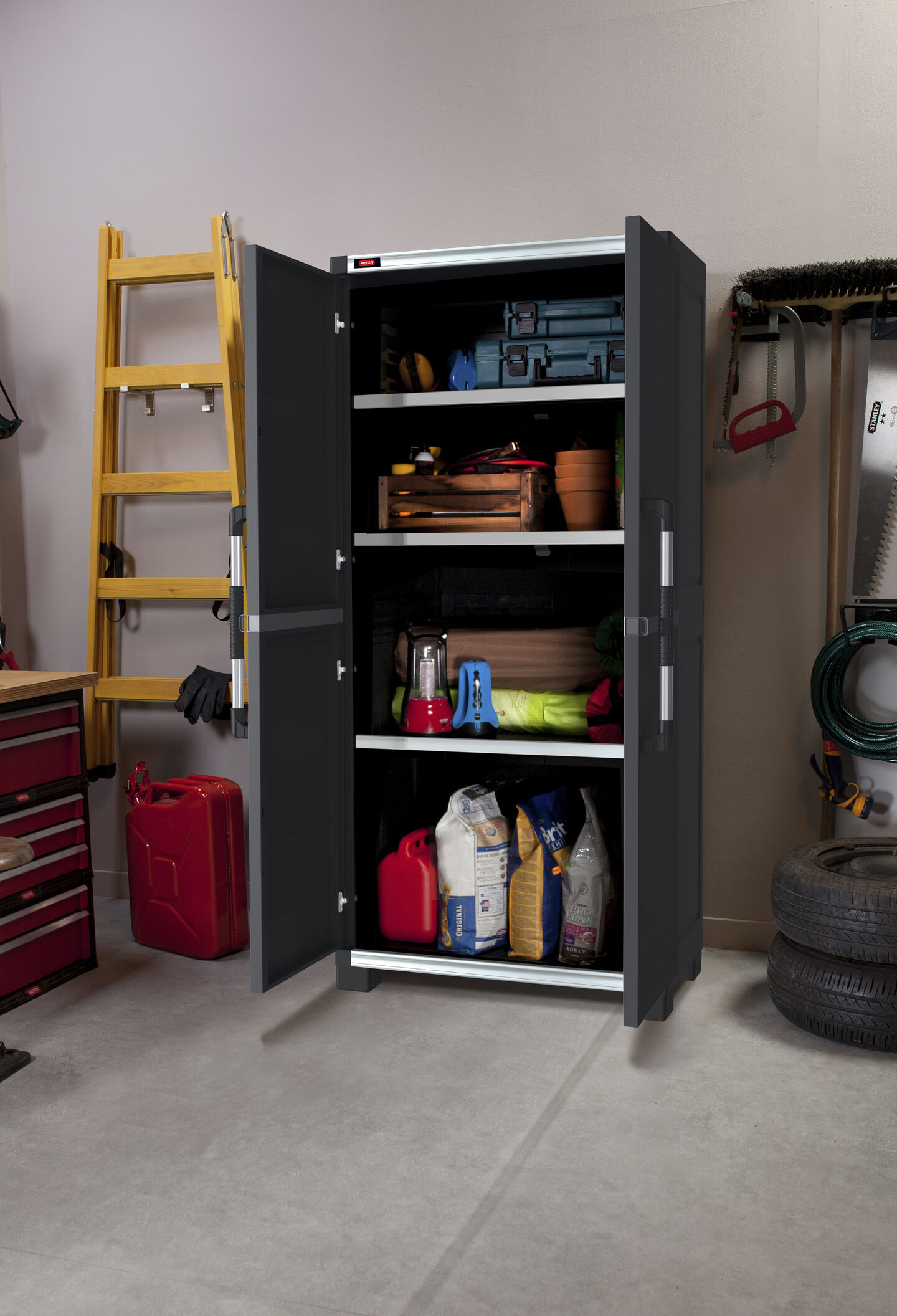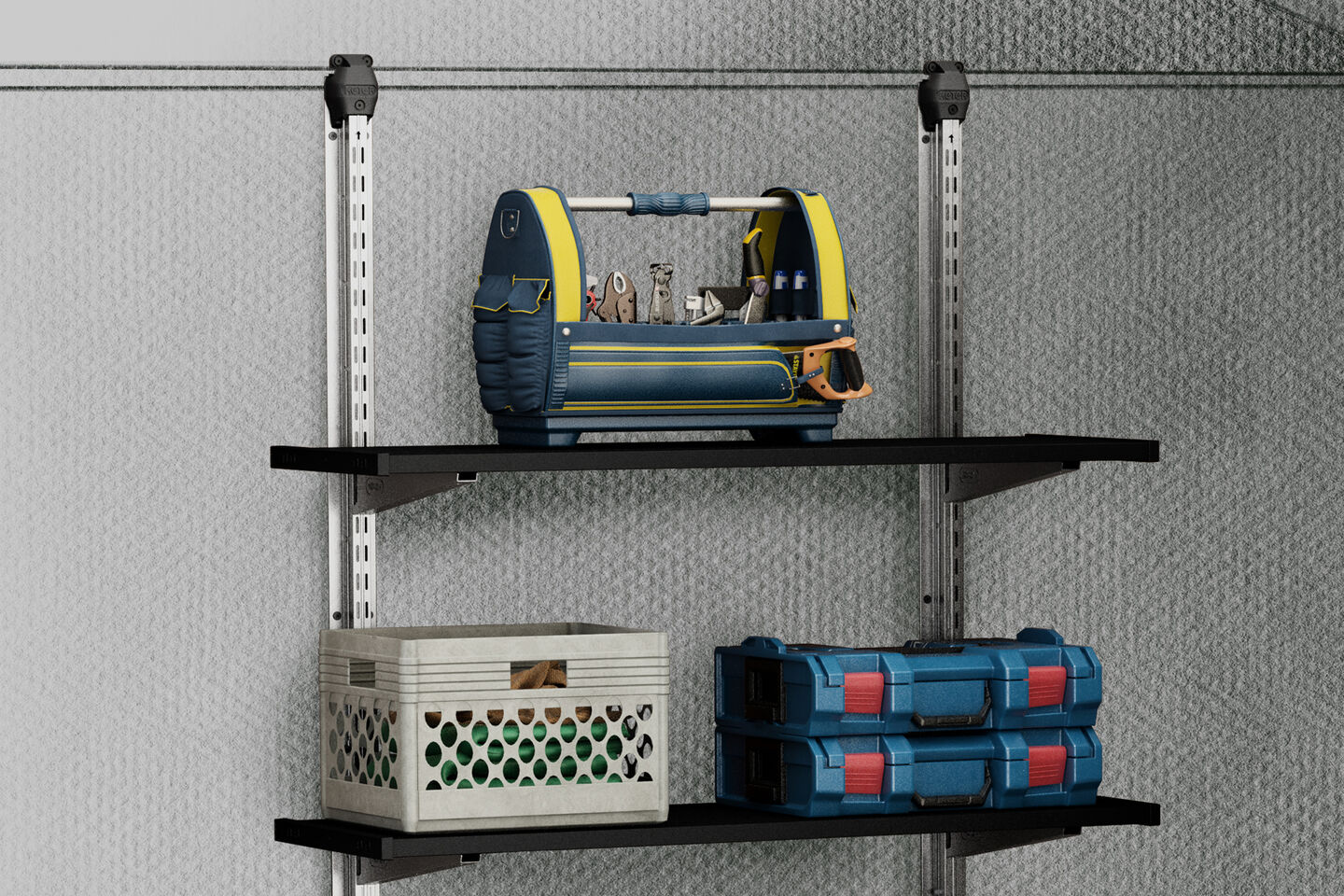
How Do You Store Different Tools?
In any workshop or garage, the ability to quickly locate and access the right tool for the job can make all the difference in productivity and efficiency. In this blog, we'll delve into the intricacies of tool storage, exploring different categories of tools and the storage solutions best suited to each of them. We'll uncover the key factors influencing storage decisions and provide practical tips for organizing your tools for maximum effectiveness. So, let's transform cluttered workspaces into streamlined havens of productivity.
Understanding Tool Categories
Hand Tools
Understanding tool categories is essential for efficient organization and storage in any workspace. Hand tools encompass a broad range of manual implements used for various tasks. Examples include screwdrivers, pliers, wrenches, hammers and tape measures. These tools are typically operated by hand and do not require external power sources. Hand tools are known for their versatility and reliability, making them indispensable for many DIY enthusiasts and professionals alike. When it comes to storage, hand tools often benefit from compartmentalized storage solutions to keep them organized and easily accessible. Toolboxes with dividers or tool bags with multiple pockets are popular choices for storing hand tools efficiently.
Power Tools
On the other hand, power tools represent a category of tools that are powered by electricity, batteries or compressed air. Examples include drills, saws, sanders and routers. Power tools are prized for their ability to perform tasks quickly and efficiently, making them essential for large-scale projects and professional use. However, their storage requires additional considerations due to their size, weight and sometimes delicate components. Proper storage of power tools often involves protecting them from dust and moisture while ensuring easy access for regular use. Wall-mounted storage racks, dedicated shelves or specialized cases with foam inserts are common solutions for organizing and safeguarding power tools.
Specialty Tools

Lastly, specialty tools refer to implements designed for specific tasks or industries. Examples include pipe wrenches, tile cutters, welding equipment and diagnostic instruments for automotive repair. These tools may not be as commonly used as hand or power tools but are indispensable for particular tasks or trades. Specialty tools often have unique characteristics that necessitate specialized storage solutions. Depending on the tool, storage considerations may include protection from corrosion, shock or temperature fluctuations. Customized storage racks, cases or cabinets designed specifically for each type of specialty tool can help ensure their longevity and accessibility in the workspace.
Factors Influencing Storage
Efficient tool storage hinges on several pivotal factors that demand meticulous attention to detail in order to enhance organization and workflow within any workspace.
- The size and shape of tools play a big role in determining the most suitable storage solutions. Bulkier tools may require larger compartments or specialized racks to accommodate their dimensions, while smaller tools can be stored more efficiently in compact drawers or organizers.
- The frequency of use directly impacts how tools should be stored. Tools used frequently should be readily accessible, ideally within arm's reach, to minimize time wasted searching for them. Conversely, tools used infrequently can be stored in less accessible areas to prioritize space for more commonly used items. Additionally, accessibility and convenience are paramount in efficient tool storage. Tools should be stored in a manner that allows for easy retrieval and return to their designated locations, reducing the likelihood of clutter and promoting a tidy workspace.
- Safety considerations are paramount when storing tools, especially in shared or high-traffic areas. Sharp or hazardous tools should be stored securely to prevent accidents, while flammable or corrosive materials should be kept in designated storage areas to mitigate potential risks.
By carefully considering these factors, individuals can tailor their tool storage solutions to suit their specific needs and maximize productivity in their workspace.
Common Tool Storage Solutions
Common tool storage solutions come in various forms, each offering unique advantages and limitations.
Wall Mounted and Corner Tool Racks

A great way to organize tools with longer handles is by using a specialized tool rack. The corner tool rack from Keter holds up to 25 tools and can be contained in the corner of your shed. It’s a great place to store things like shovels, rakes, etc., that can be much more difficult to store. Another great option for these bigger tools is the wall mount tool organizer. It’s durable, customizable, anti-scratch, and can hold up to 79.2 pounds across all of the hooks. Most people will just lean taller tools up against a wall, but they can easily fall over and create a tripping hazard. By putting them in a wall-mounted or corner tool rack, they won’t fall over, and they’ll be much easier to access as you need to use them.
Toolboxes
Toolboxes are a versatile option for tool storage. They come in a range of types, including portable toolboxes for on-the-go use, stackable options for maximizing vertical space and rolling toolboxes for easy mobility in larger workspaces. You can keep one large toolbox for everything or sort and organize tools into several smaller toolboxes. Either will keep tools easily accessible for you.
Pegboards
Pegboards and wall-mounted systems offer an excellent alternative for those seeking customizable and space-saving storage solutions. One of the primary benefits of using pegboards is their adaptability, allowing users to rearrange hooks, shelves and bins to accommodate different tools and optimize space usage. Effective organization on pegboards involves grouping tools by type or frequency of use, ensuring easy access and quick visual identification. Utilizing pegboard accessories such as tool holders, baskets and magnetic strips can further enhance organization and maximize storage efficiency.
Cabinets and Drawers
Cabinets and drawers provide ample storage space for larger tools and equipment, making them ideal for workshops or garages with limited floor space. Cabinets offer a concealed storage solution, keeping tools protected from dust and debris while maintaining a tidy appearance. Organizational strategies for drawers often involve using dividers, trays or foam inserts to compartmentalize tools and prevent them from shifting during transport or use. Labeling drawers according to tool type or function can also streamline the organization and facilitate quicker tool retrieval.
Integrated Storage Solutions
For those who prefer integrated storage solutions, workbenches and tool carts offer a convenient way to incorporate storage directly into the workspace design. Workbenches with built-in shelves, drawers and pegboards provide a centralized location for tools, eliminating the need for separate storage units. Mobility and flexibility considerations are crucial when selecting workbenches or tool carts, especially in dynamic work environments where tools need to be transported between locations. Choosing models with sturdy wheels and ergonomic handles ensures smooth maneuverability and ease of use, enhancing overall efficiency in the workspace.
Tailoring Storage Solutions to Specific Tools

Tailoring storage solutions to specific tools is essential for maximizing efficiency and maintaining a well-organized workspace. When it comes to hand tool storage, grouping similar tools together can streamline workflow and simplify tool retrieval. Implementing dividers and organizers within toolboxes or drawers helps prevent tools from becoming jumbled and ensures each tool has its designated space. By keeping hand tools organized and easily accessible, users can minimize time spent searching for specific items and focus more on the task at hand, ultimately improving productivity.
Power tool storage requires additional considerations to protect these valuable and often expensive tools. Storing batteries and accessories alongside power tools ensures everything is kept together for convenient access when needed. Moreover, protecting tools from dust and moisture is crucial for maintaining their performance and longevity. Employing sealed containers or specialized cases equipped with foam inserts serves as a protective measure for power tools. This shields them from environmental threats and diminishes the likelihood of harm, thereby extending their longevity. Implementing these strategies not only keeps power tools organized but also helps preserve their functionality over time.
Effective tool storage is not just about tidiness; it's about maximizing efficiency and productivity in any workspace. By understanding the diverse categories of tools and tailoring storage solutions to their specific needs, individuals can create organized environments that enhance workflow and streamline tasks. From hand tools to power tools and specialty equipment, implementing smart storage strategies such as grouping similar tools, utilizing dividers and protecting tools from environmental hazards is key to maintaining a functional workspace.

We build in a sustainable manner.
We use innovative materials and leading technologies to build planet-friendly products that last a lifetime.

















